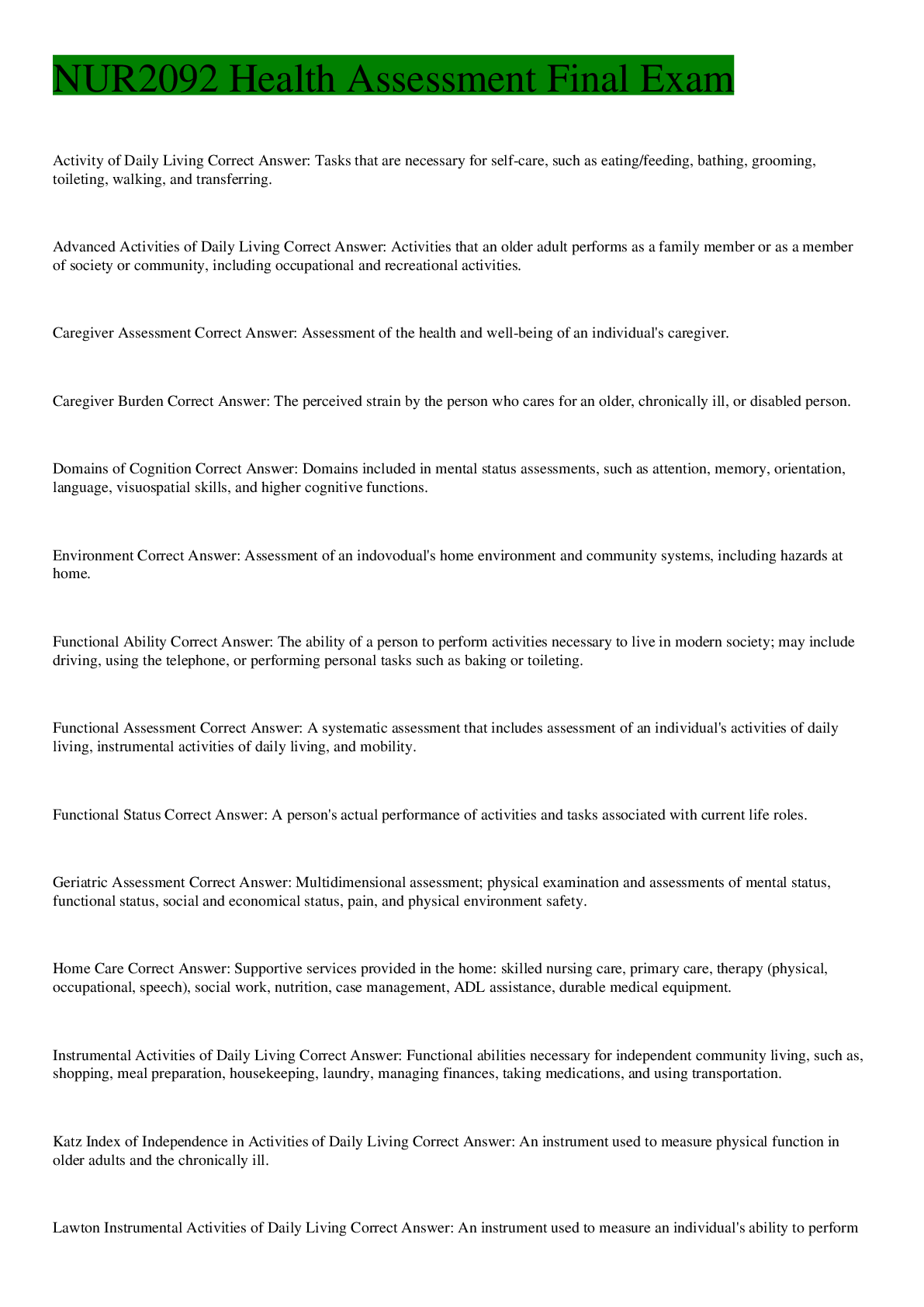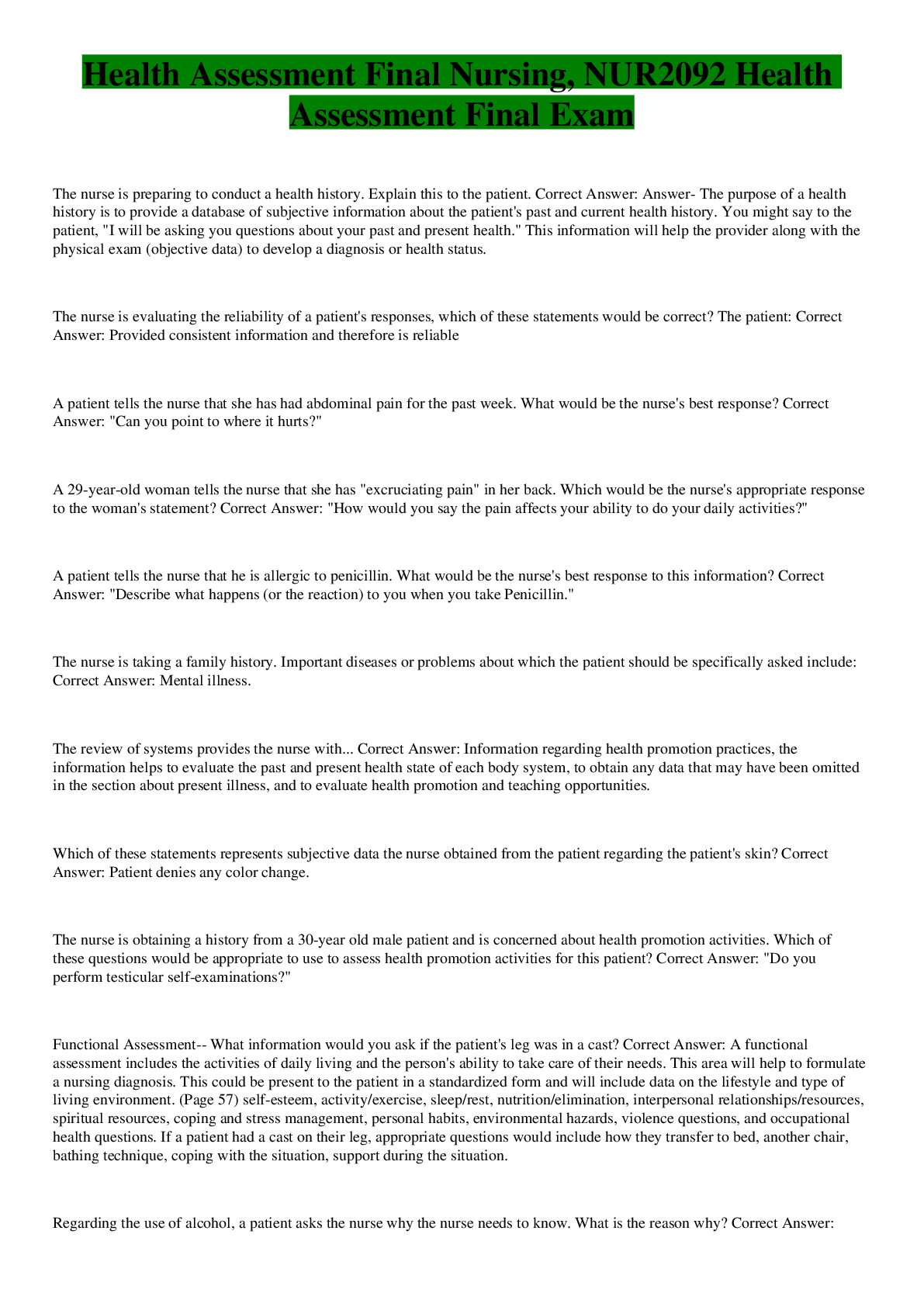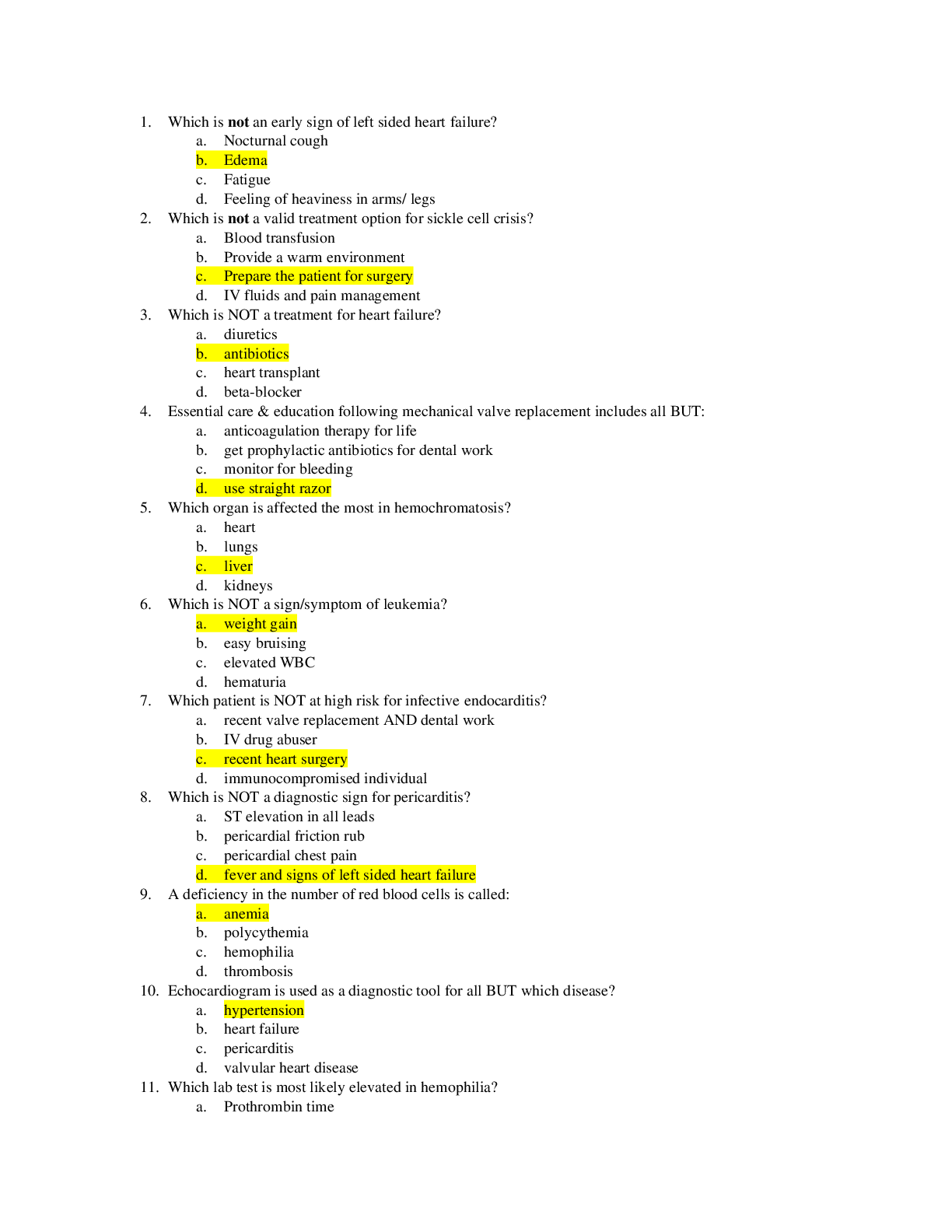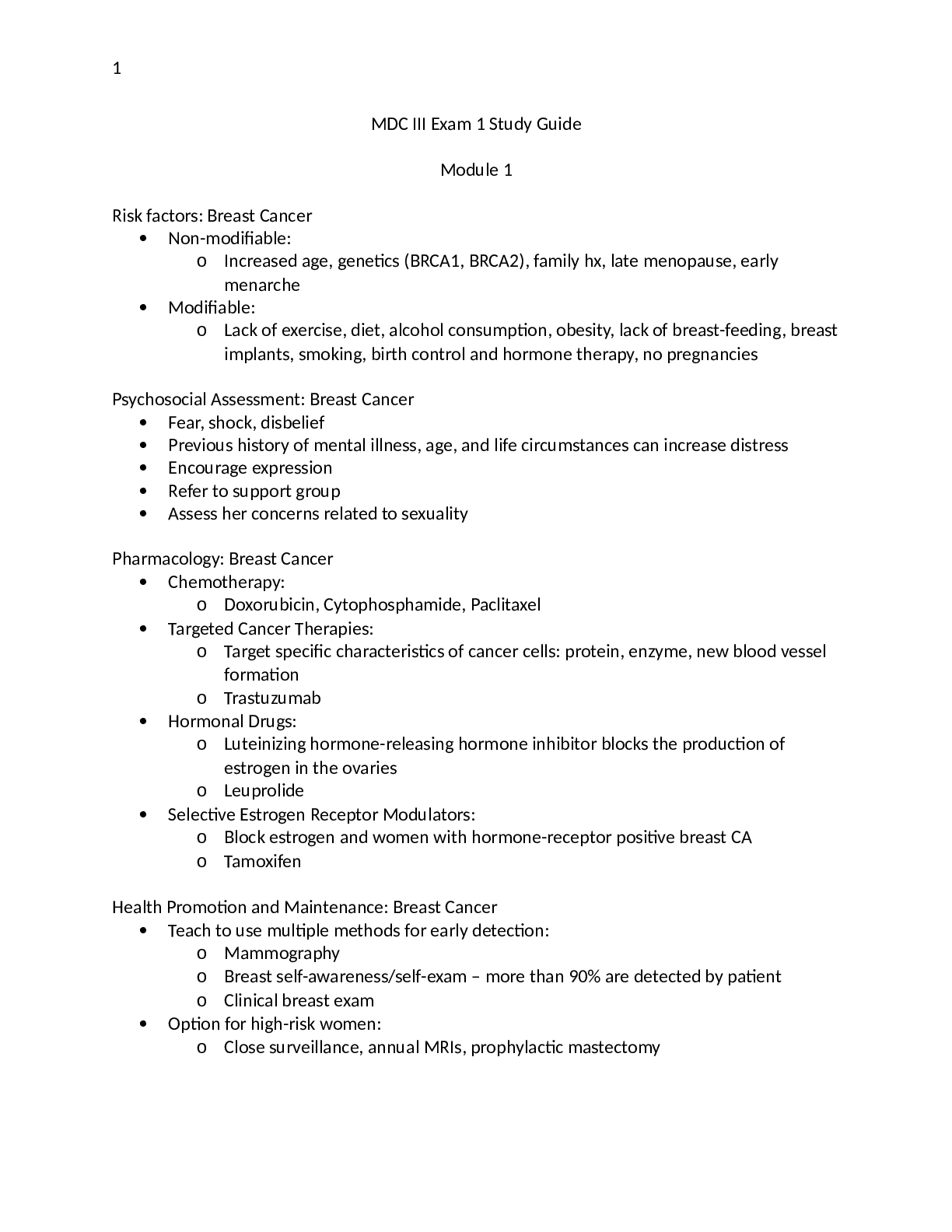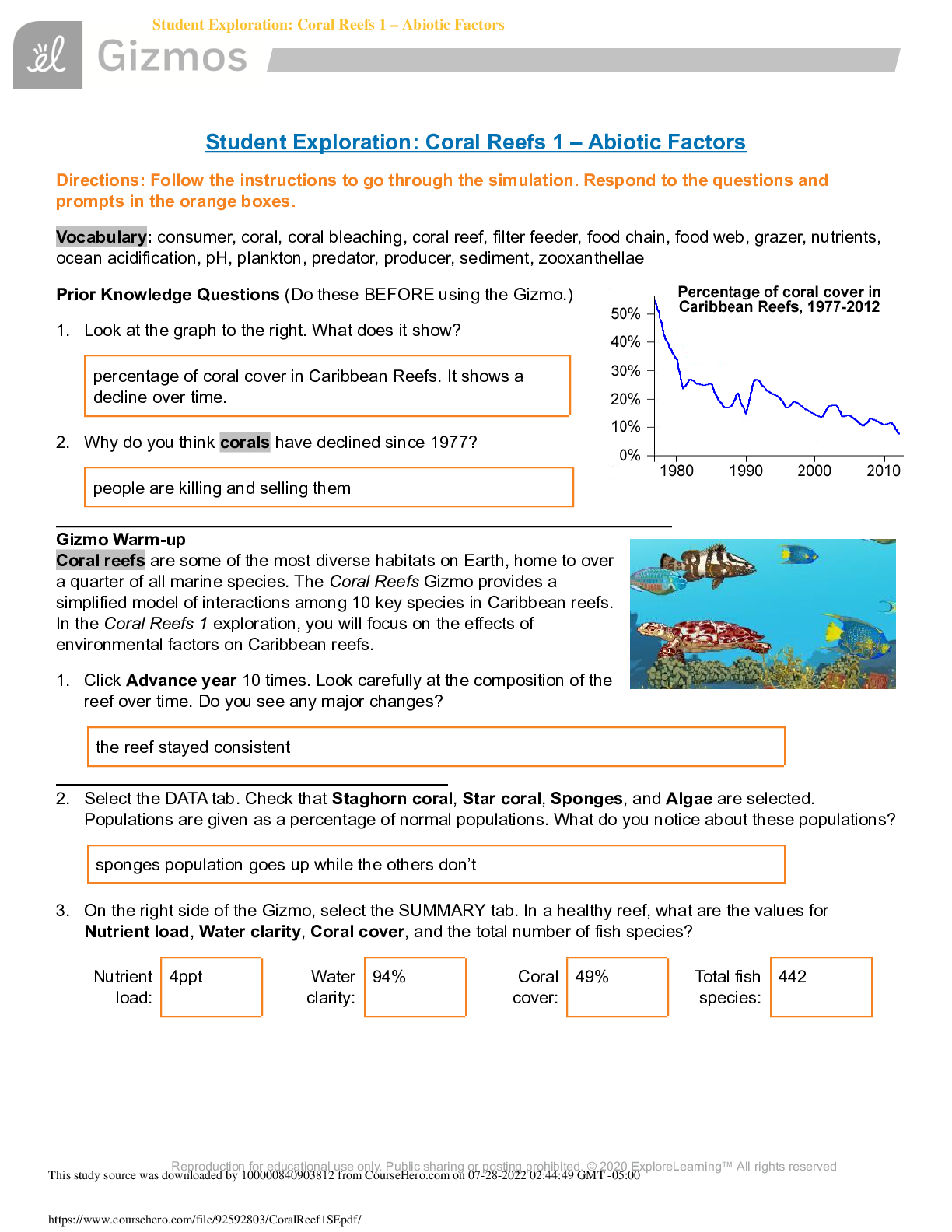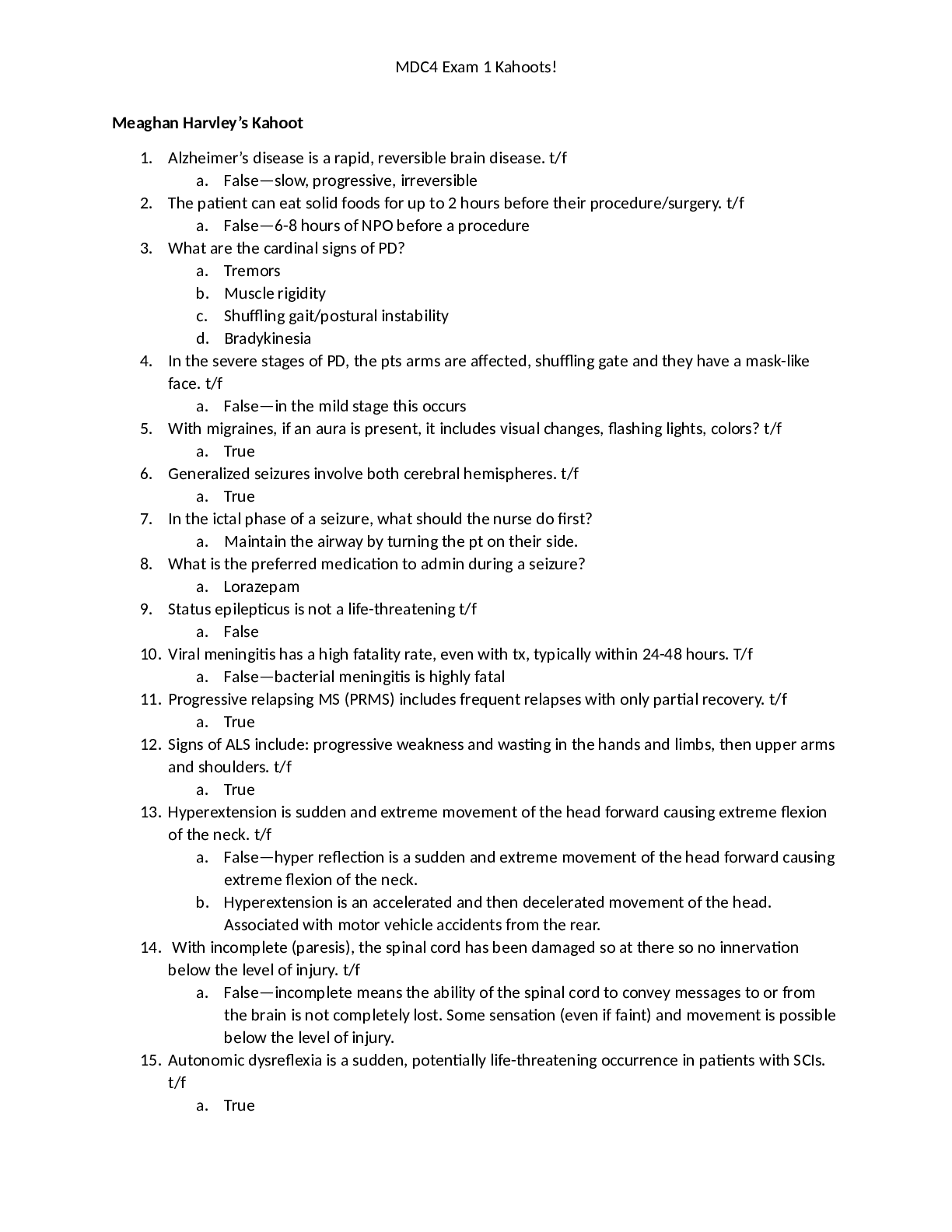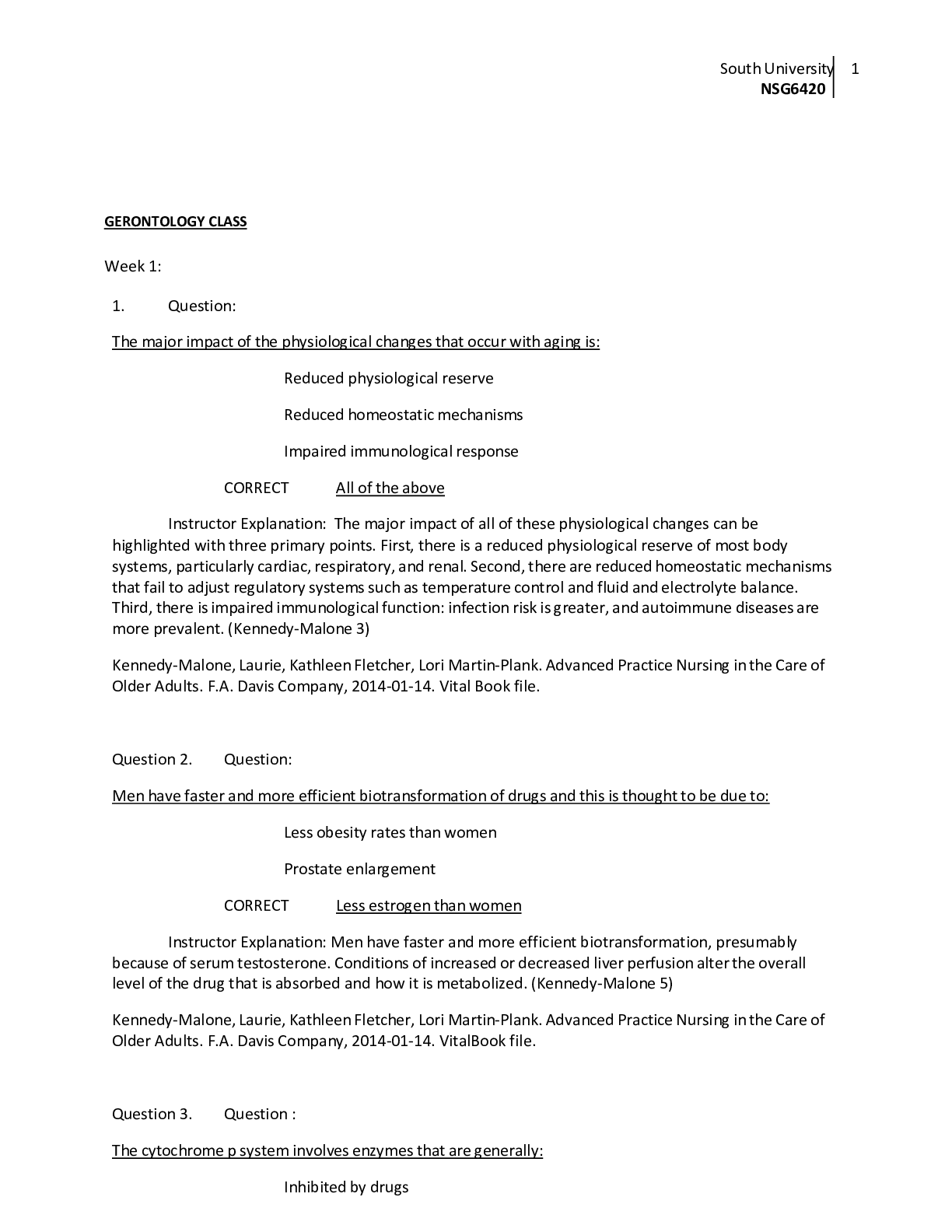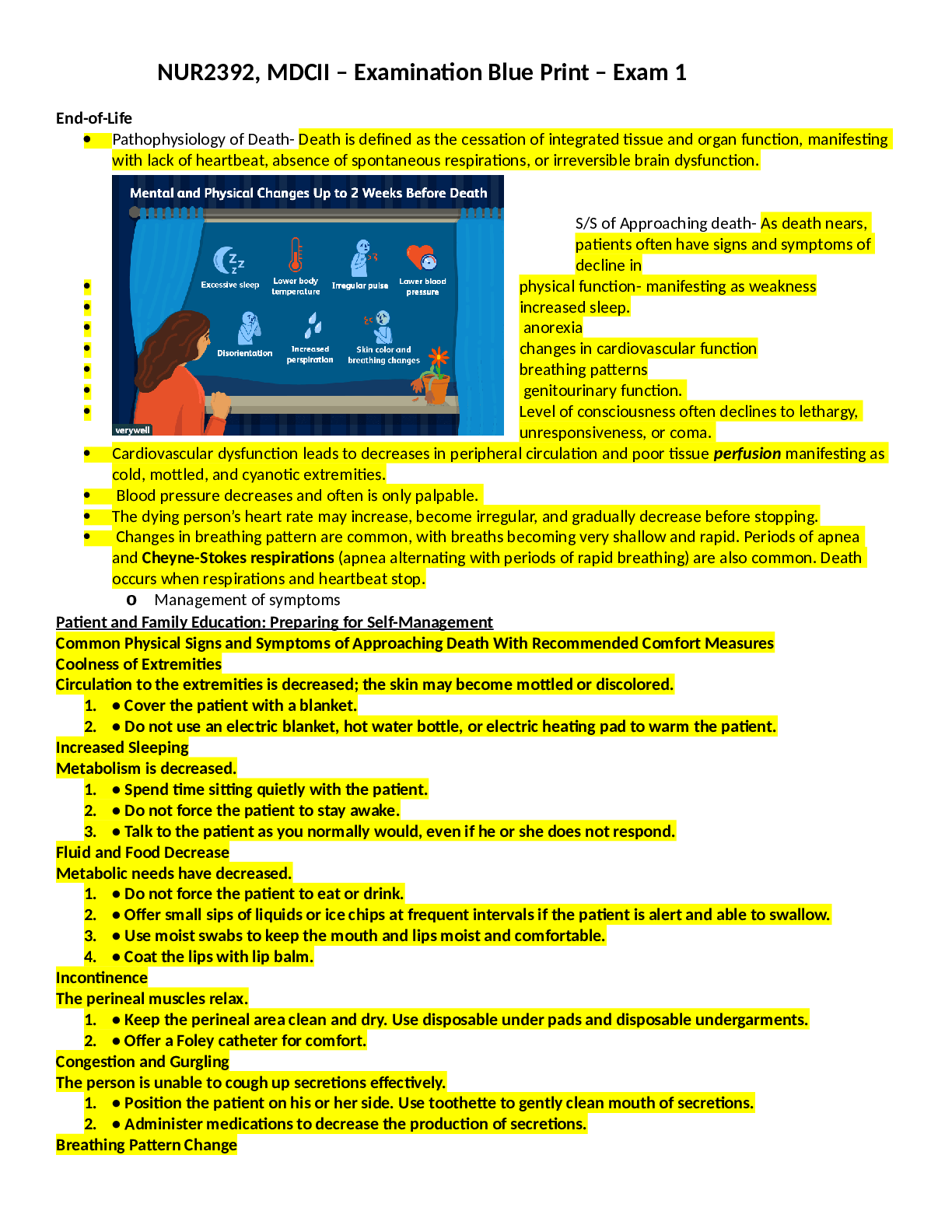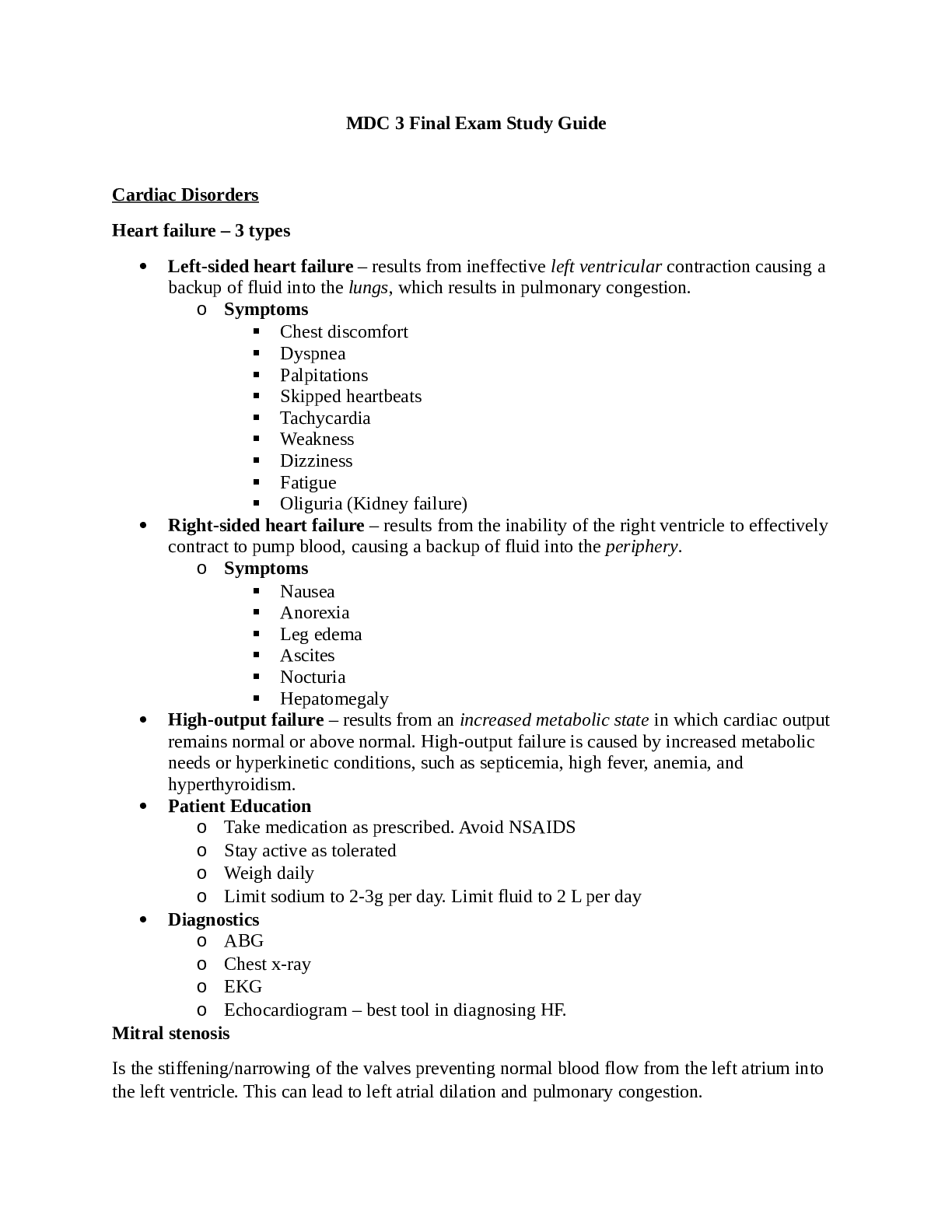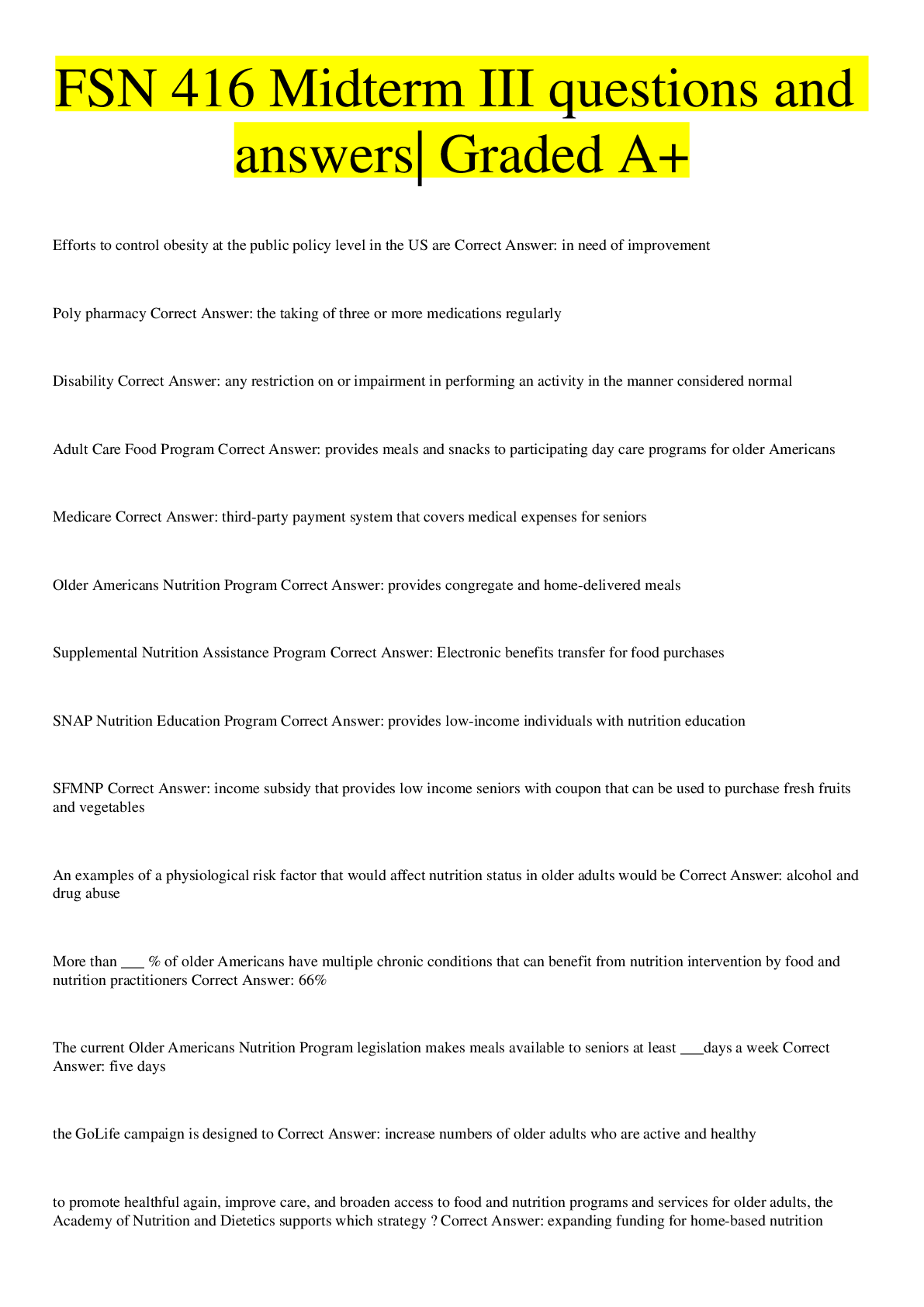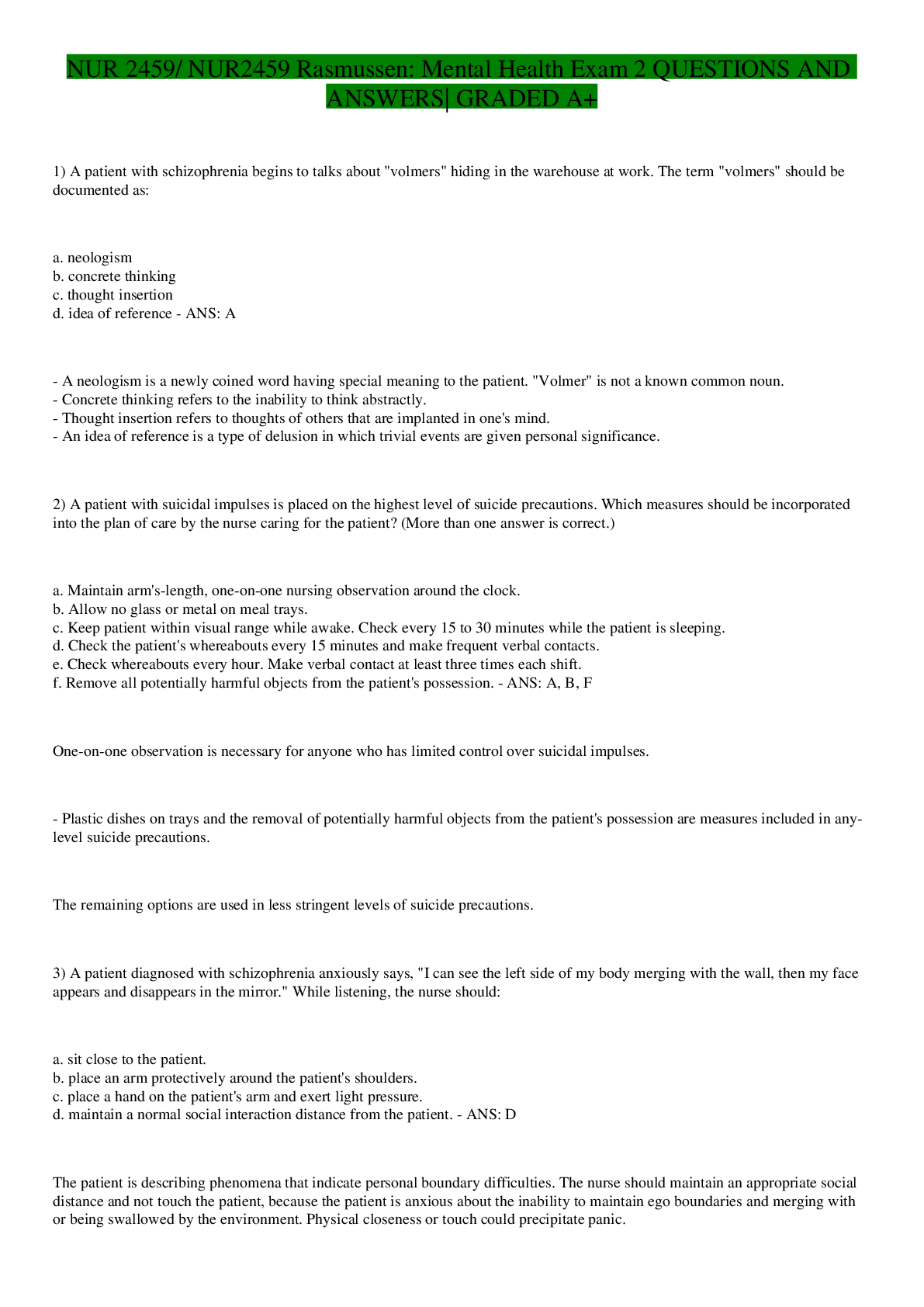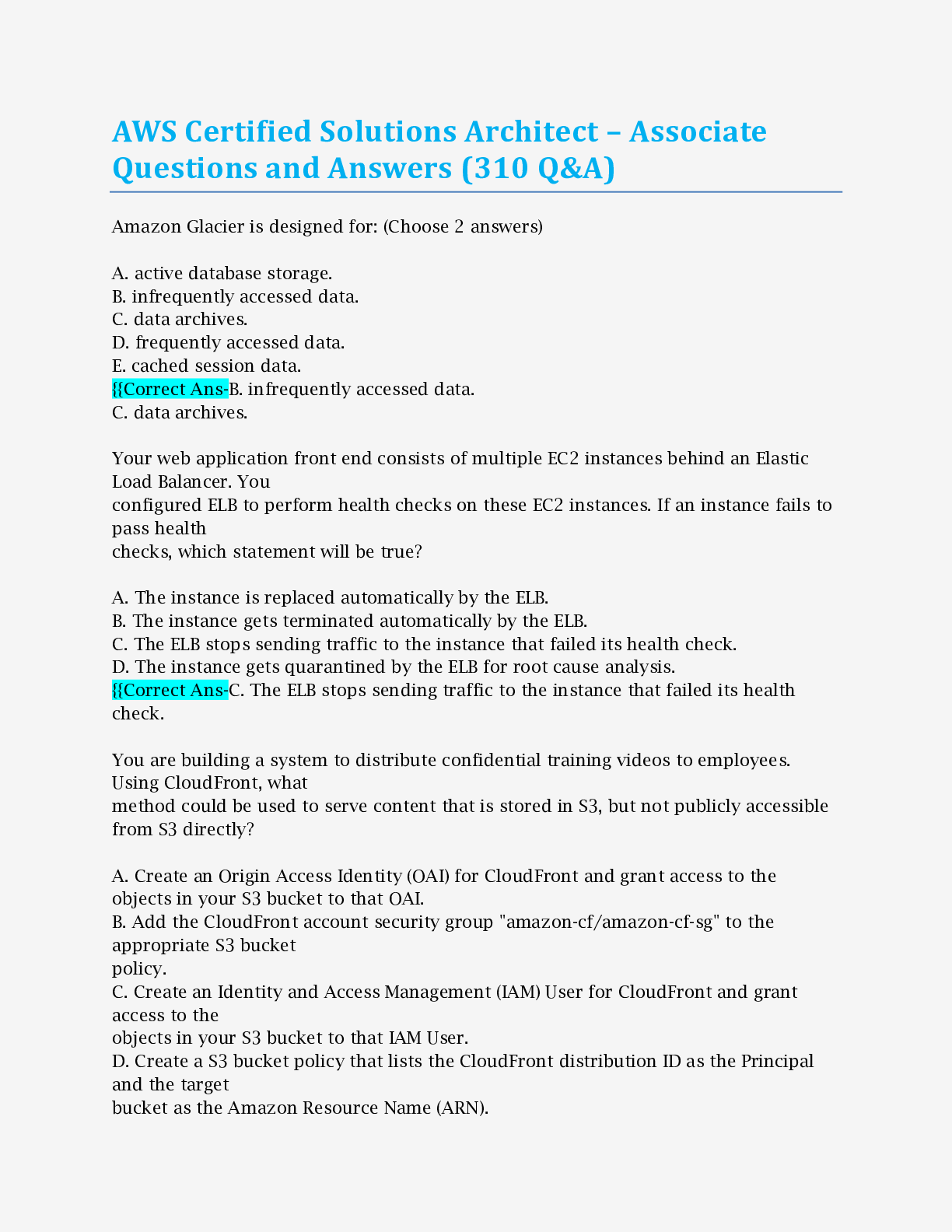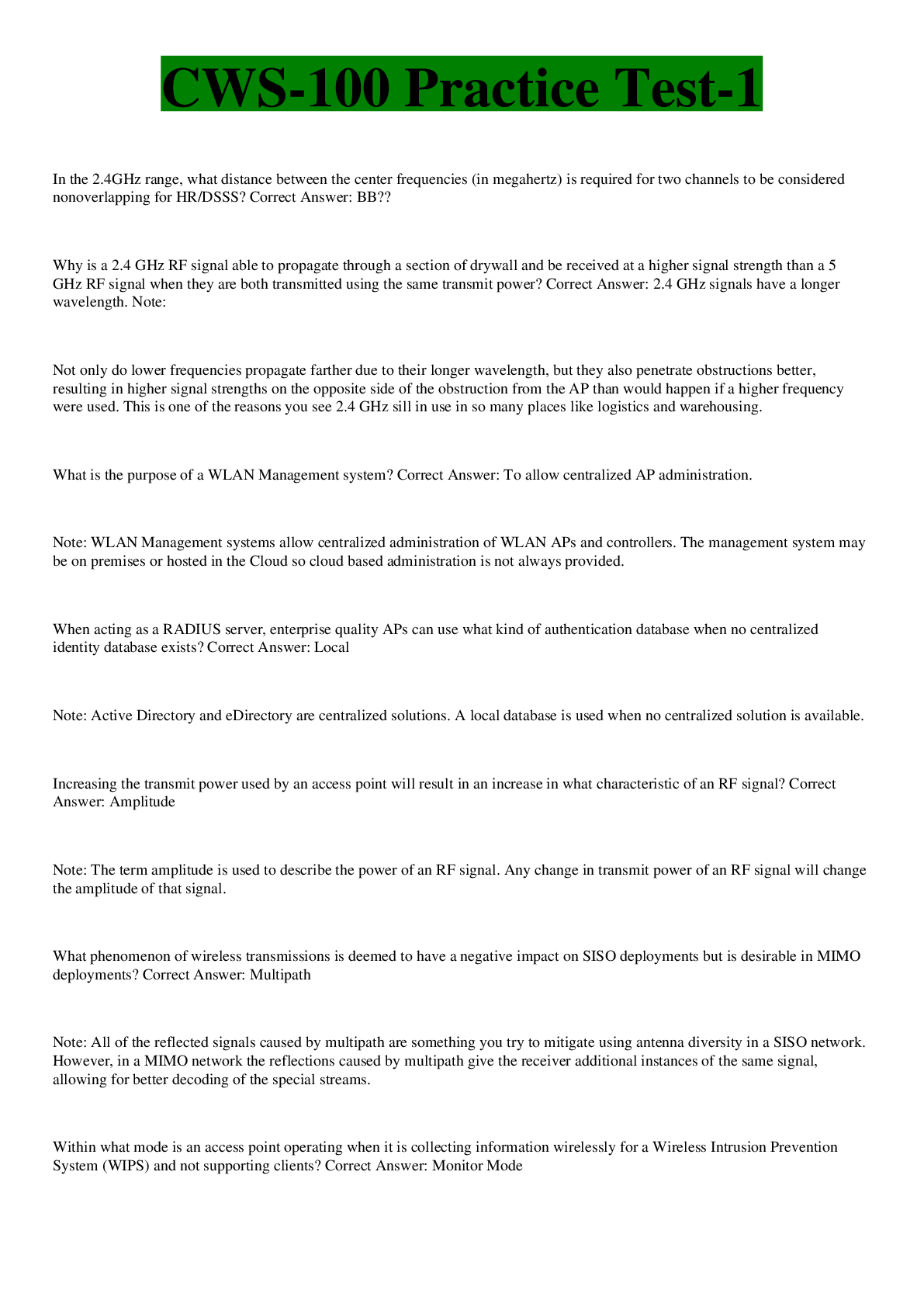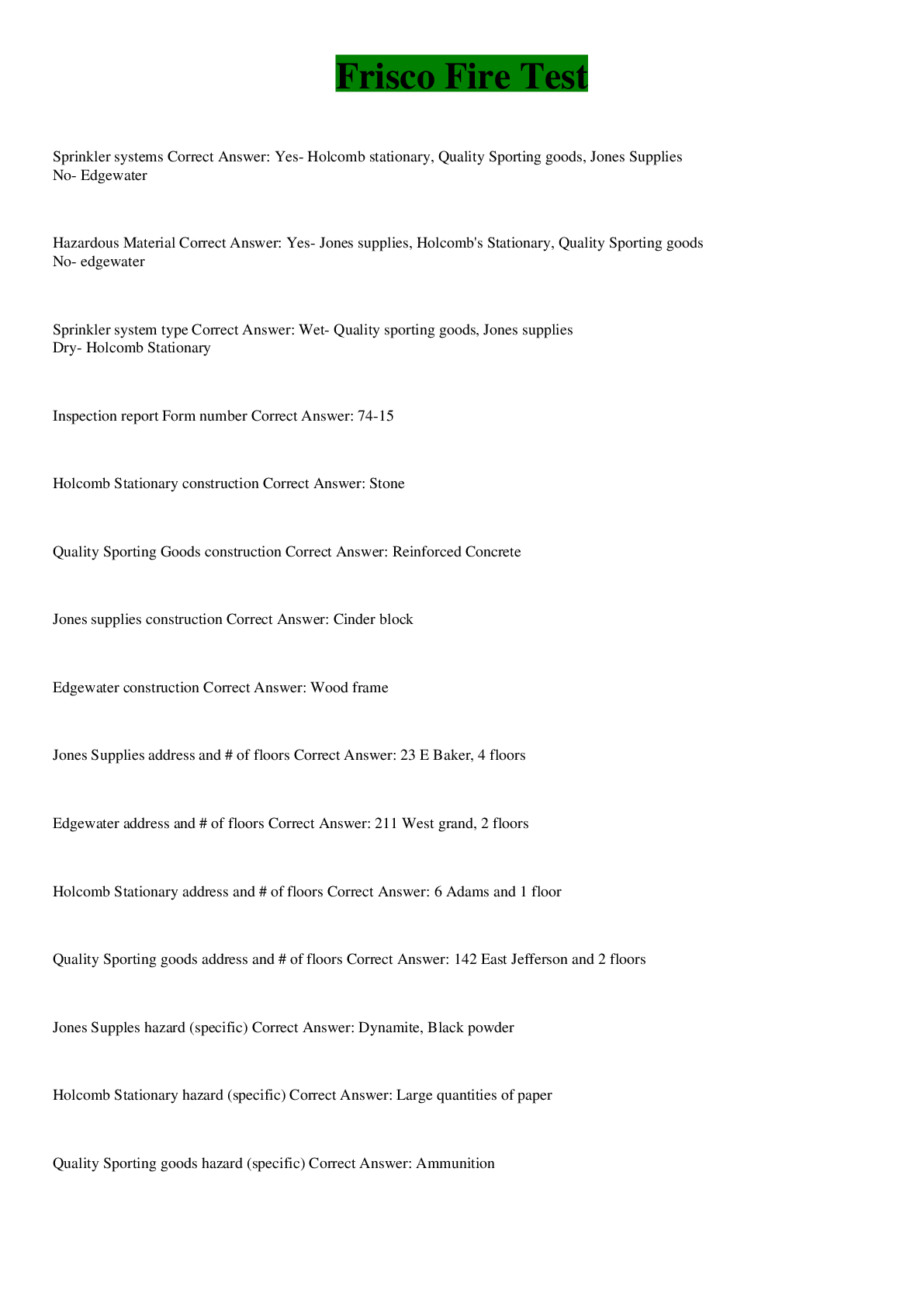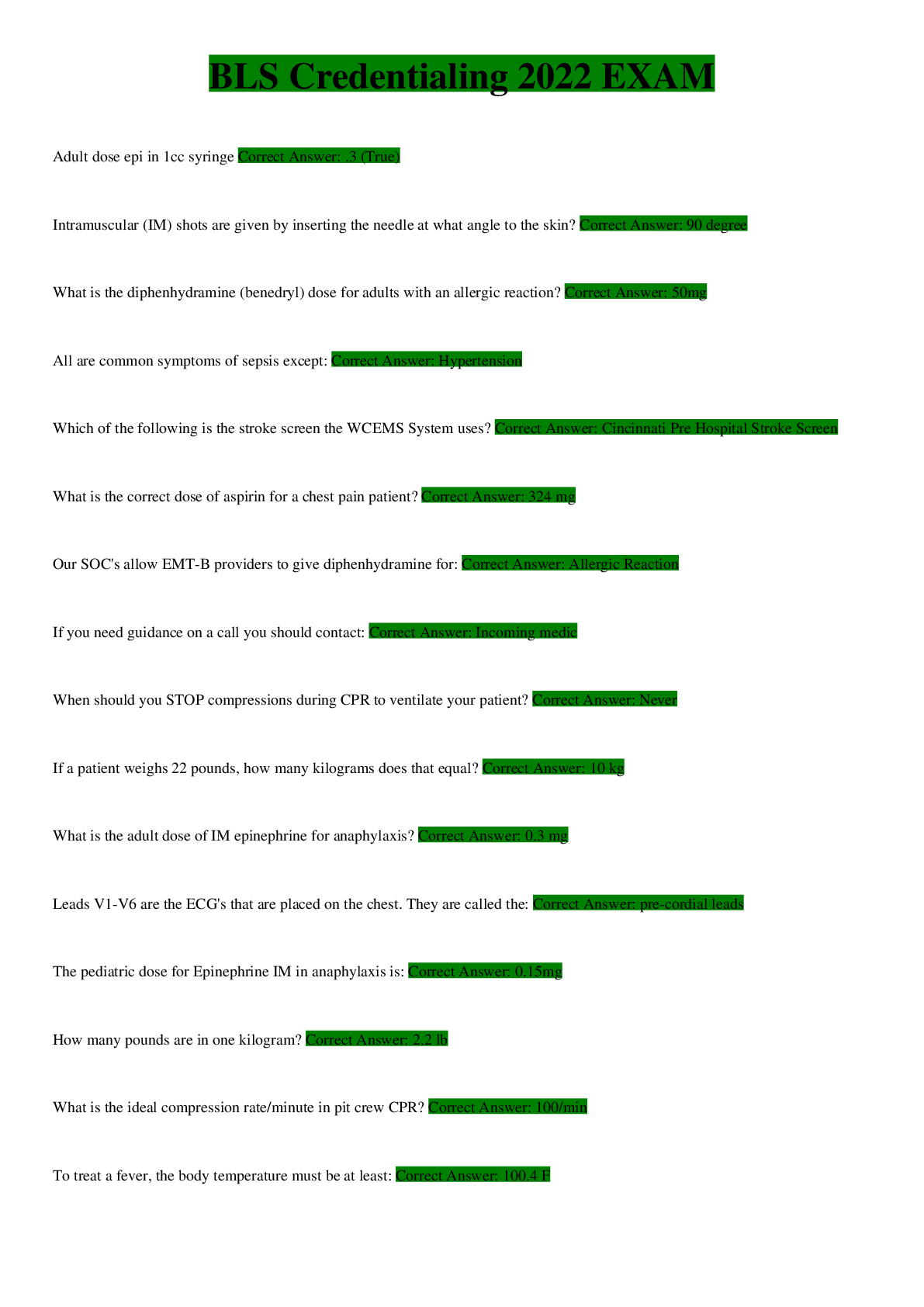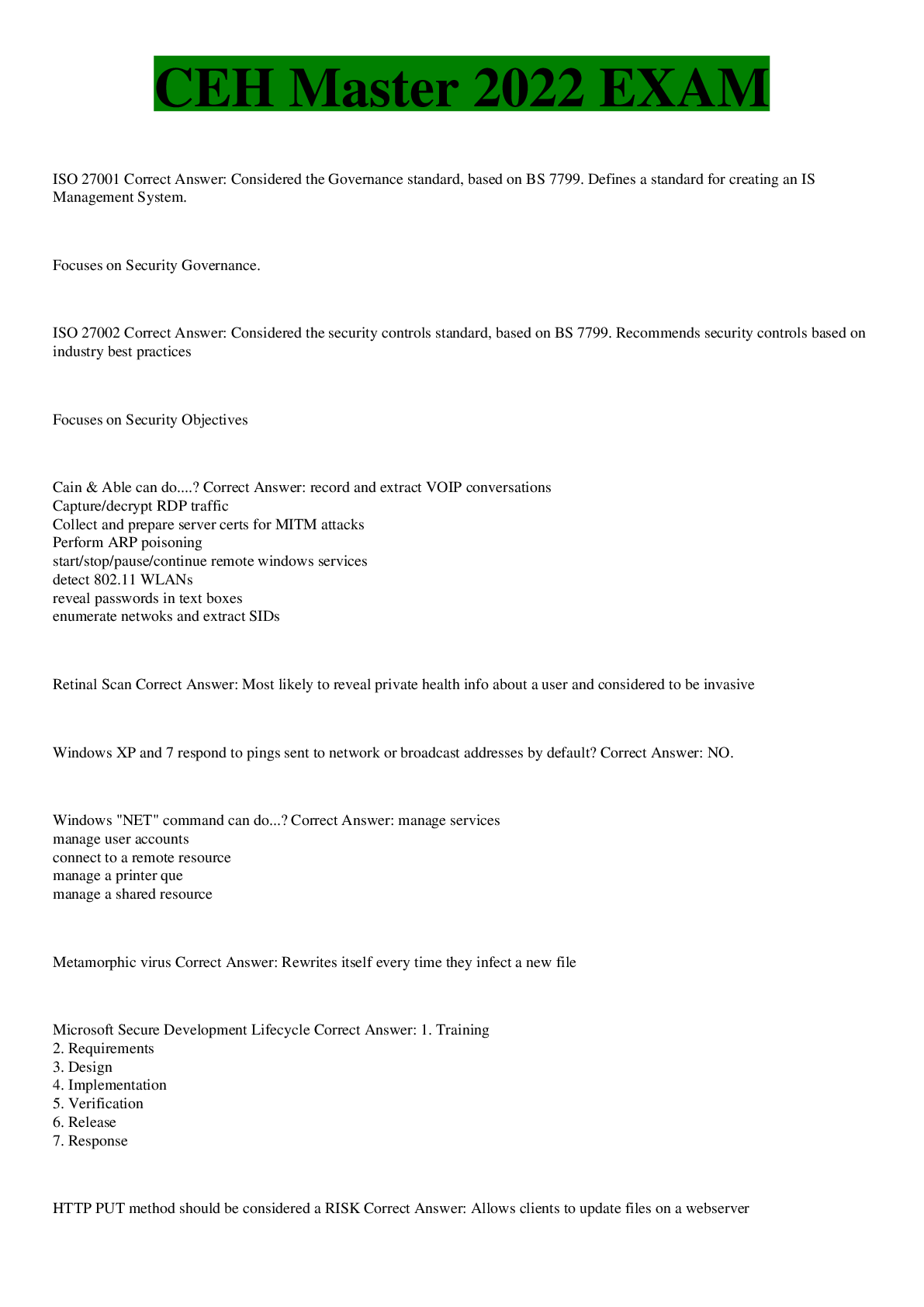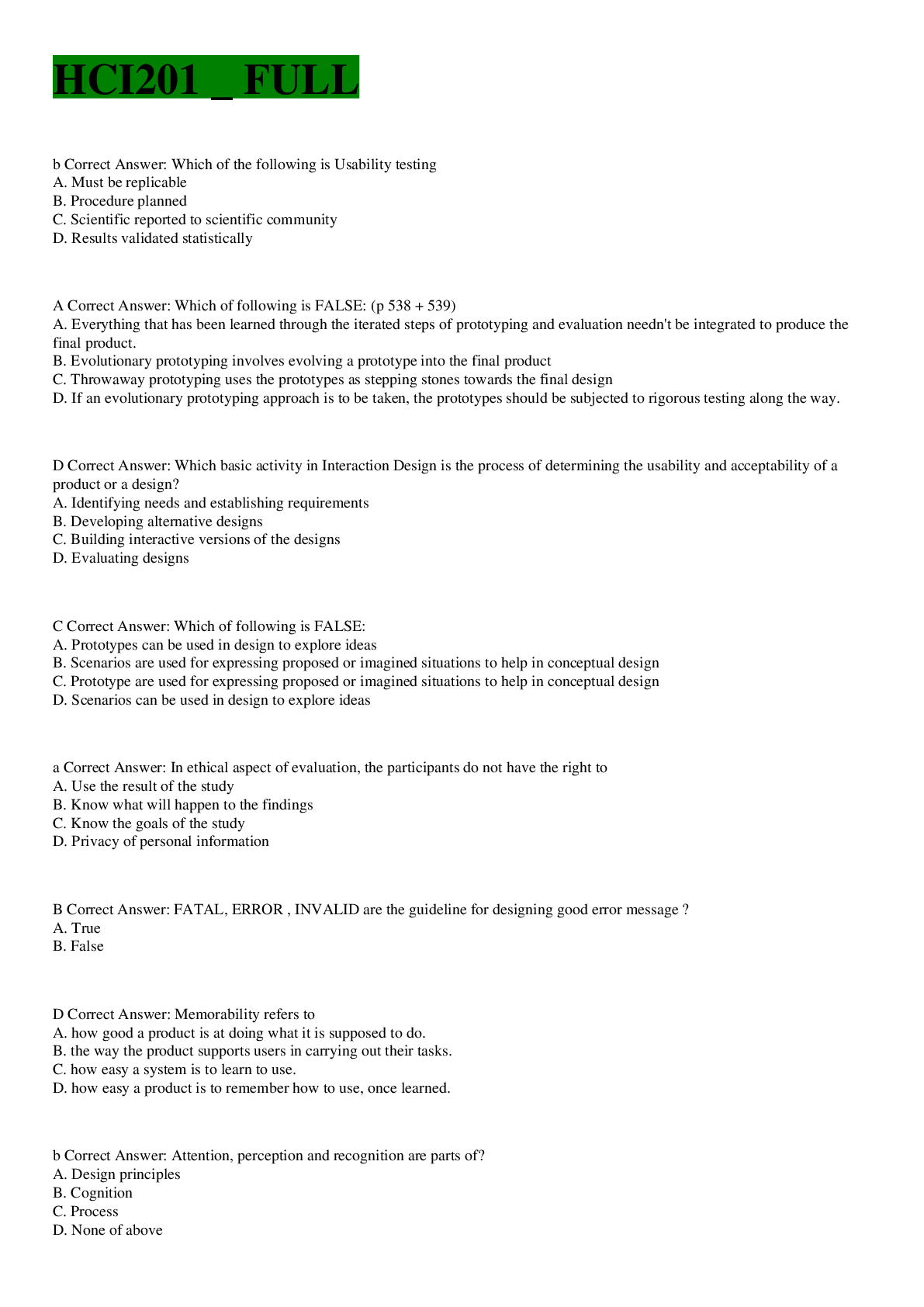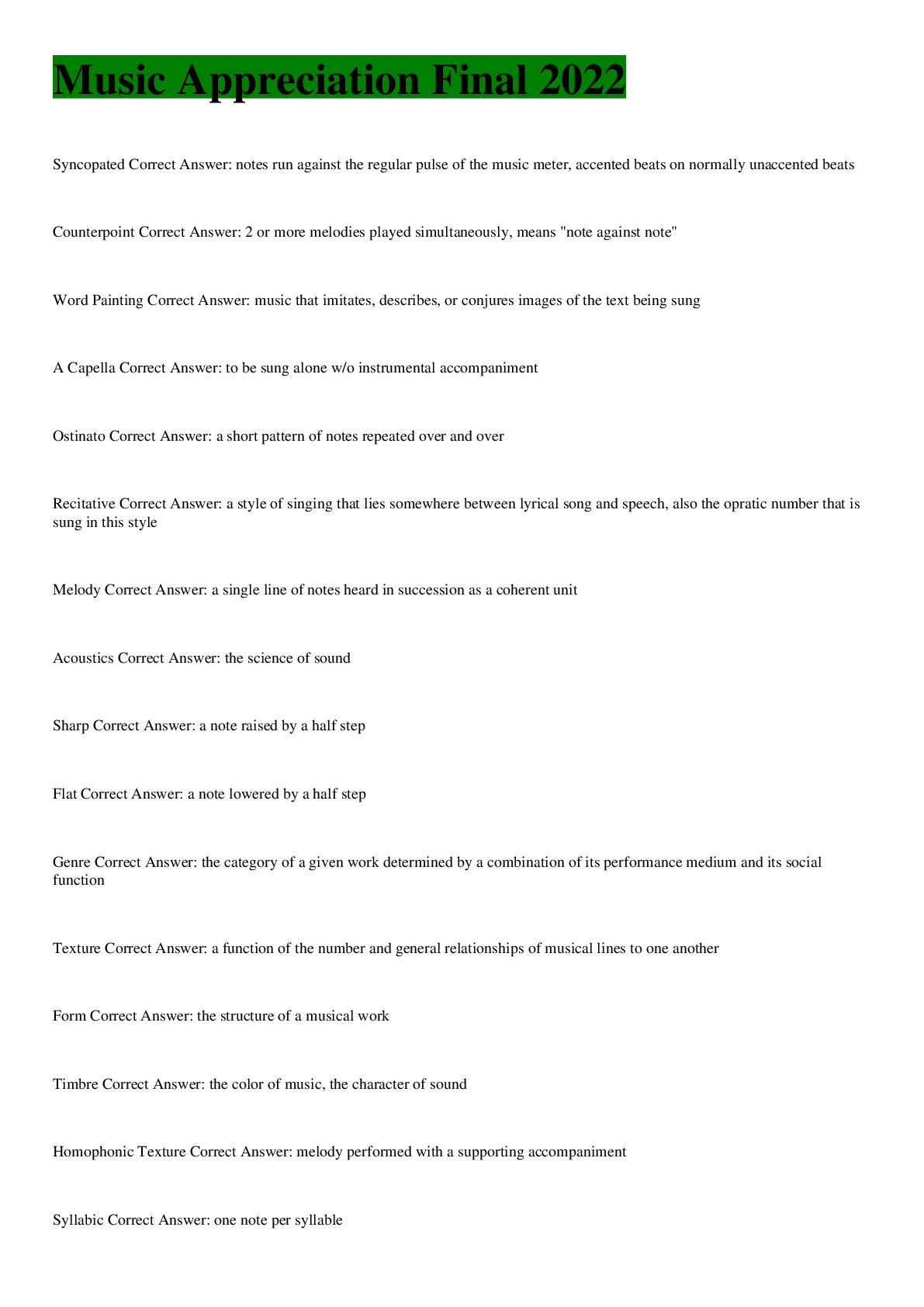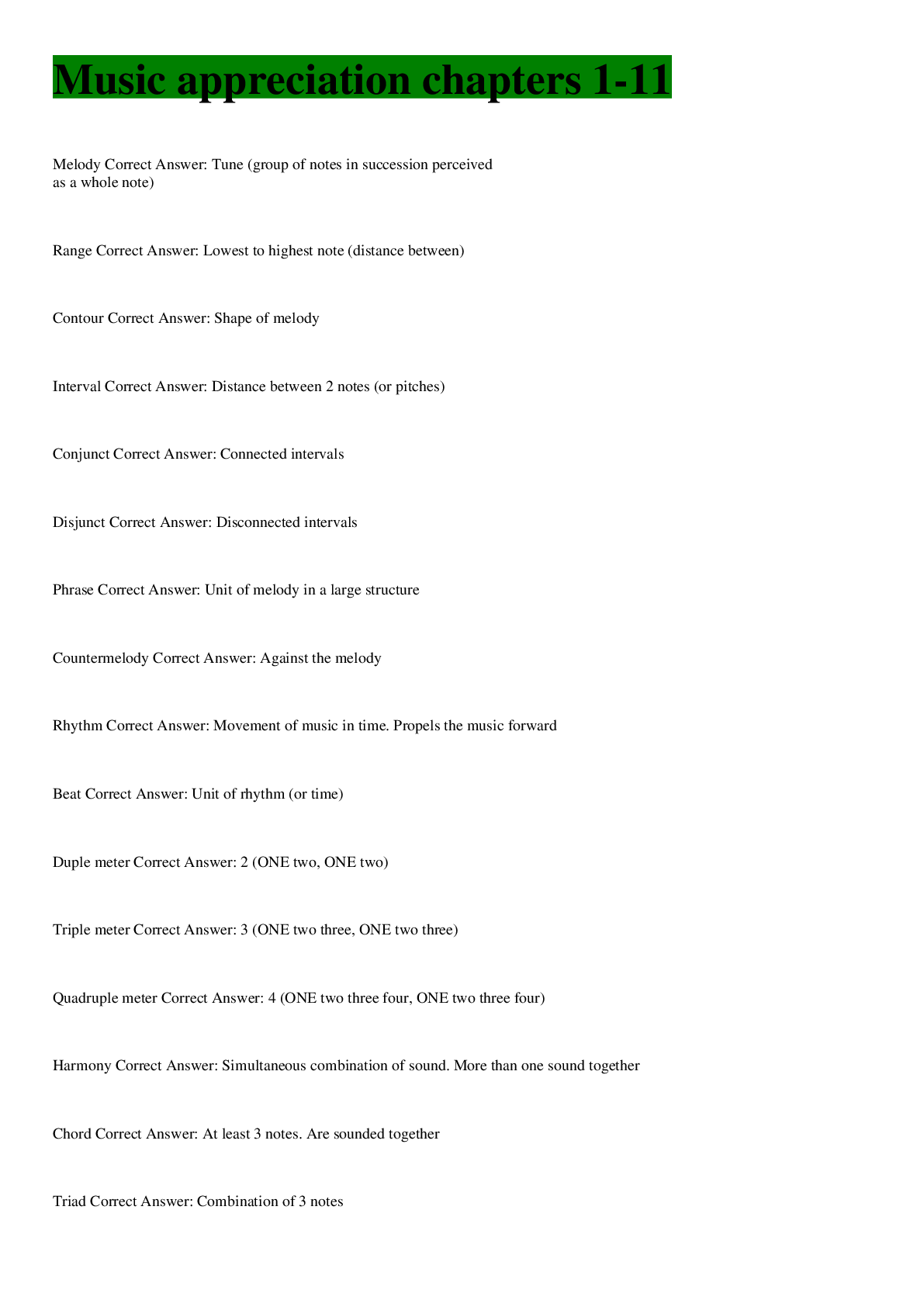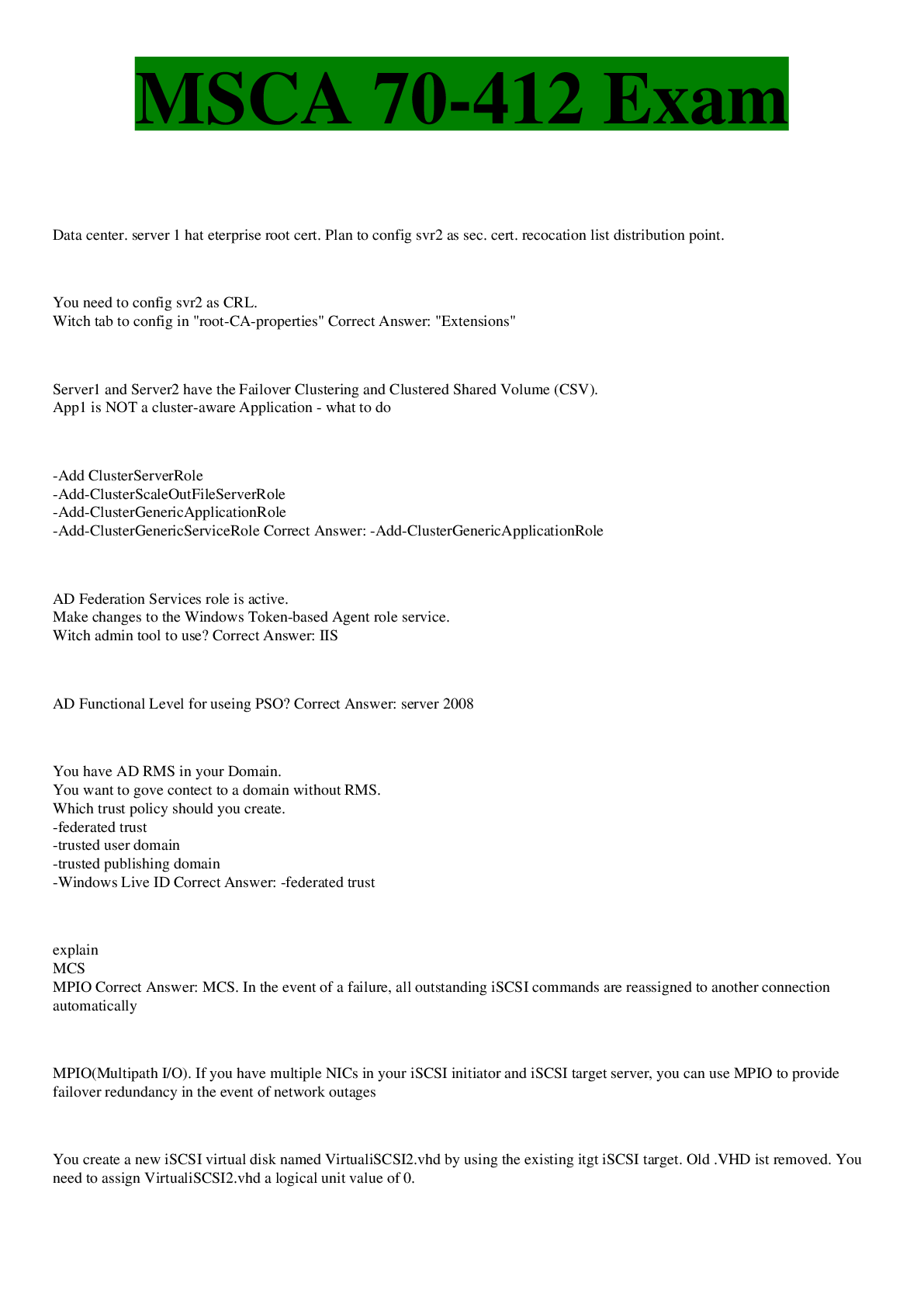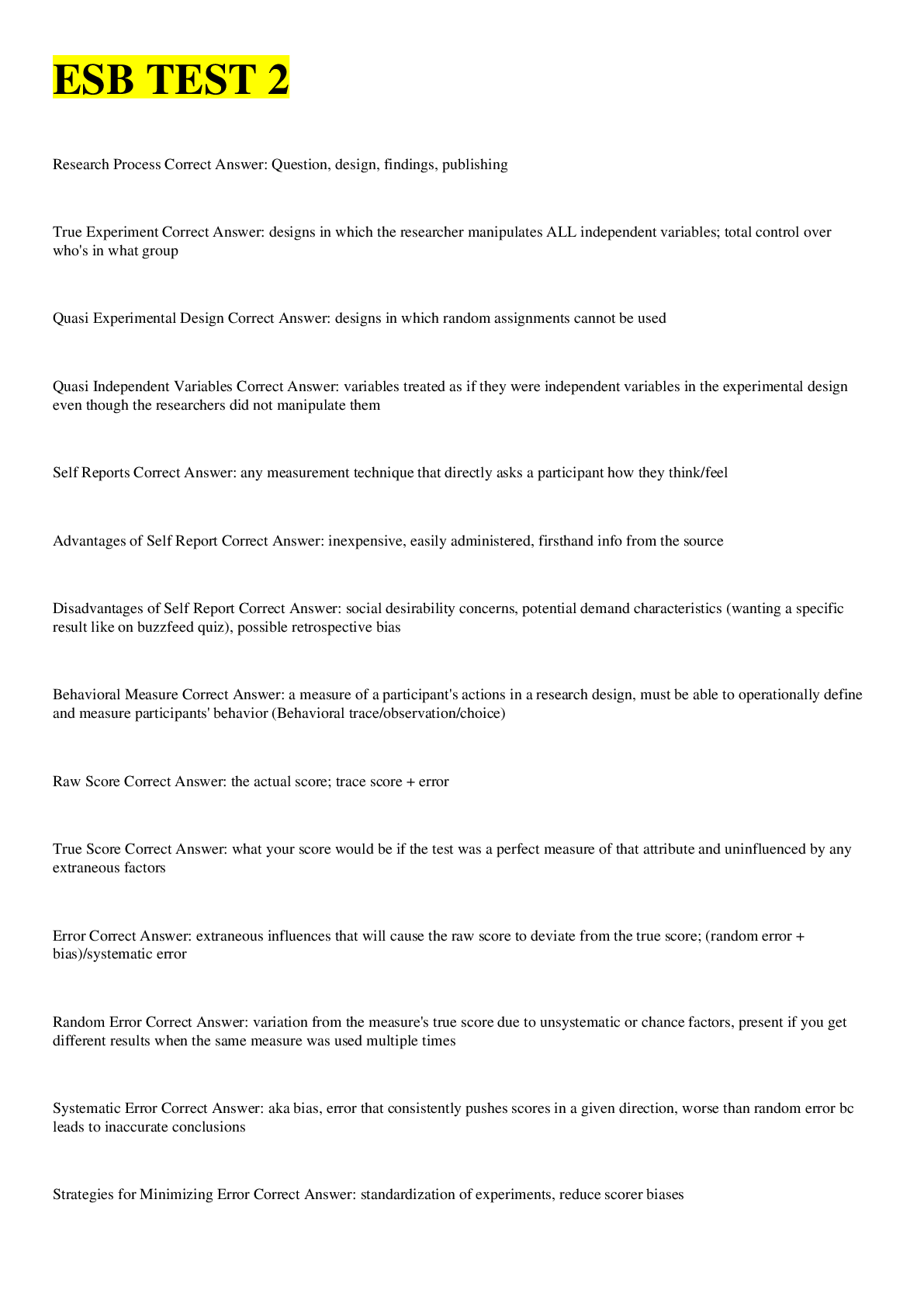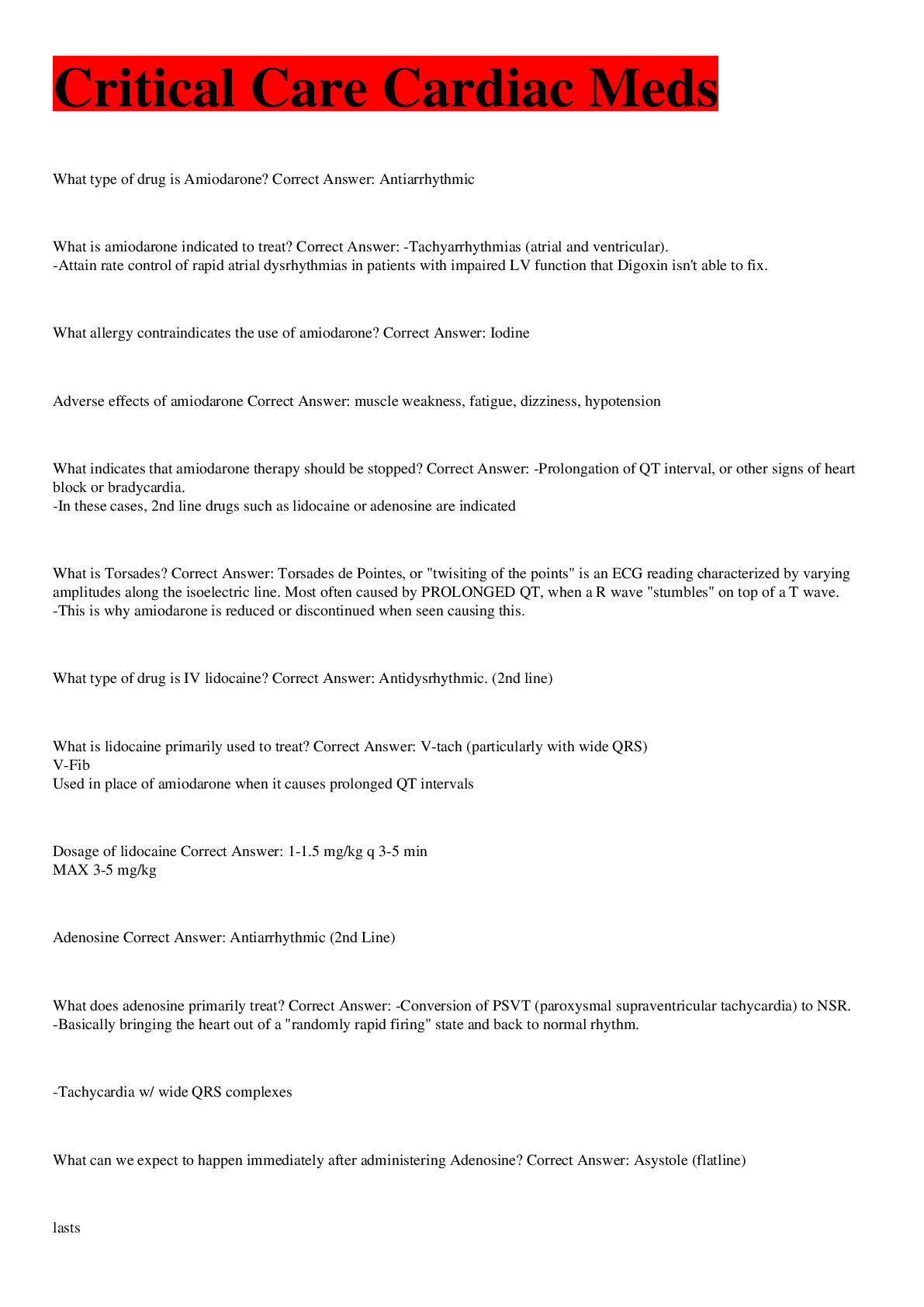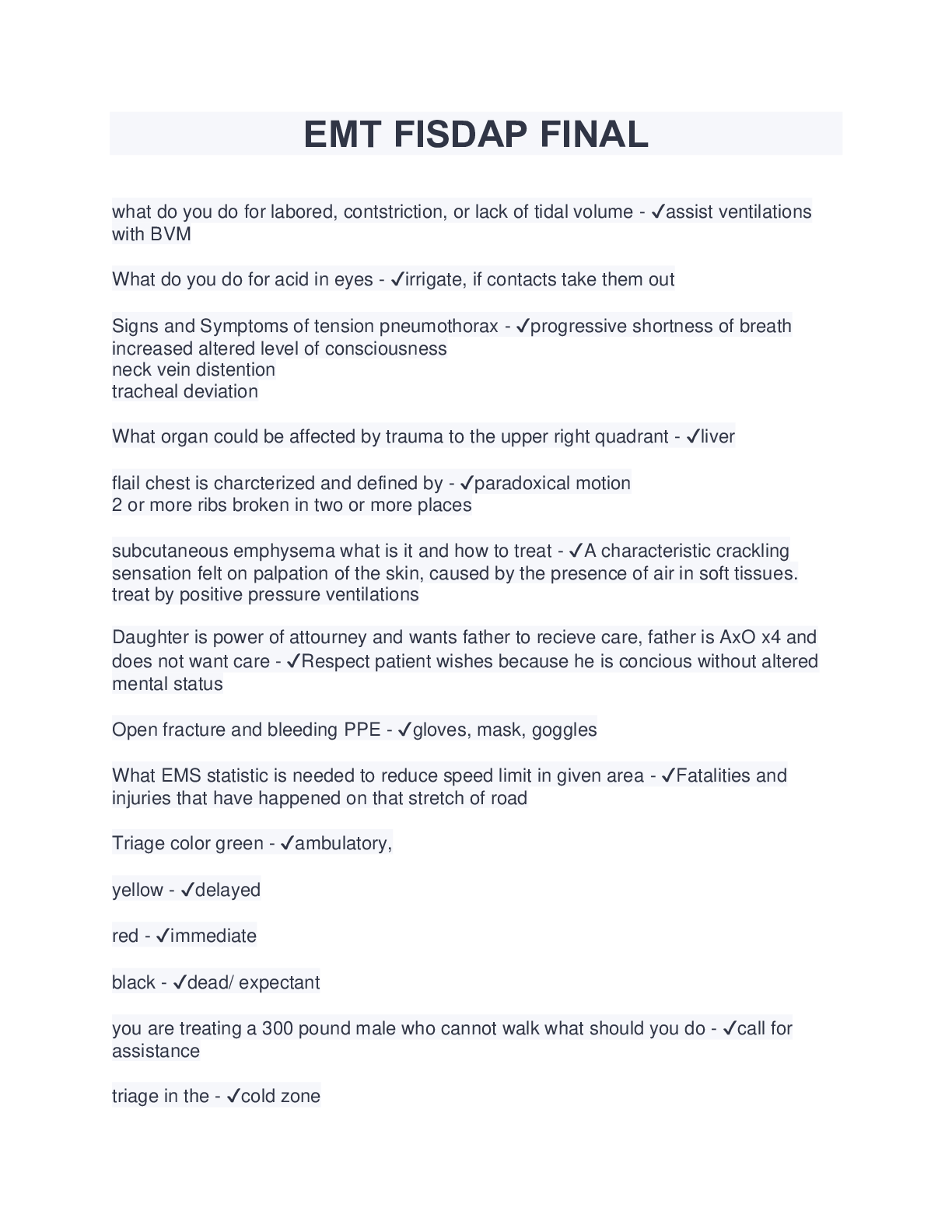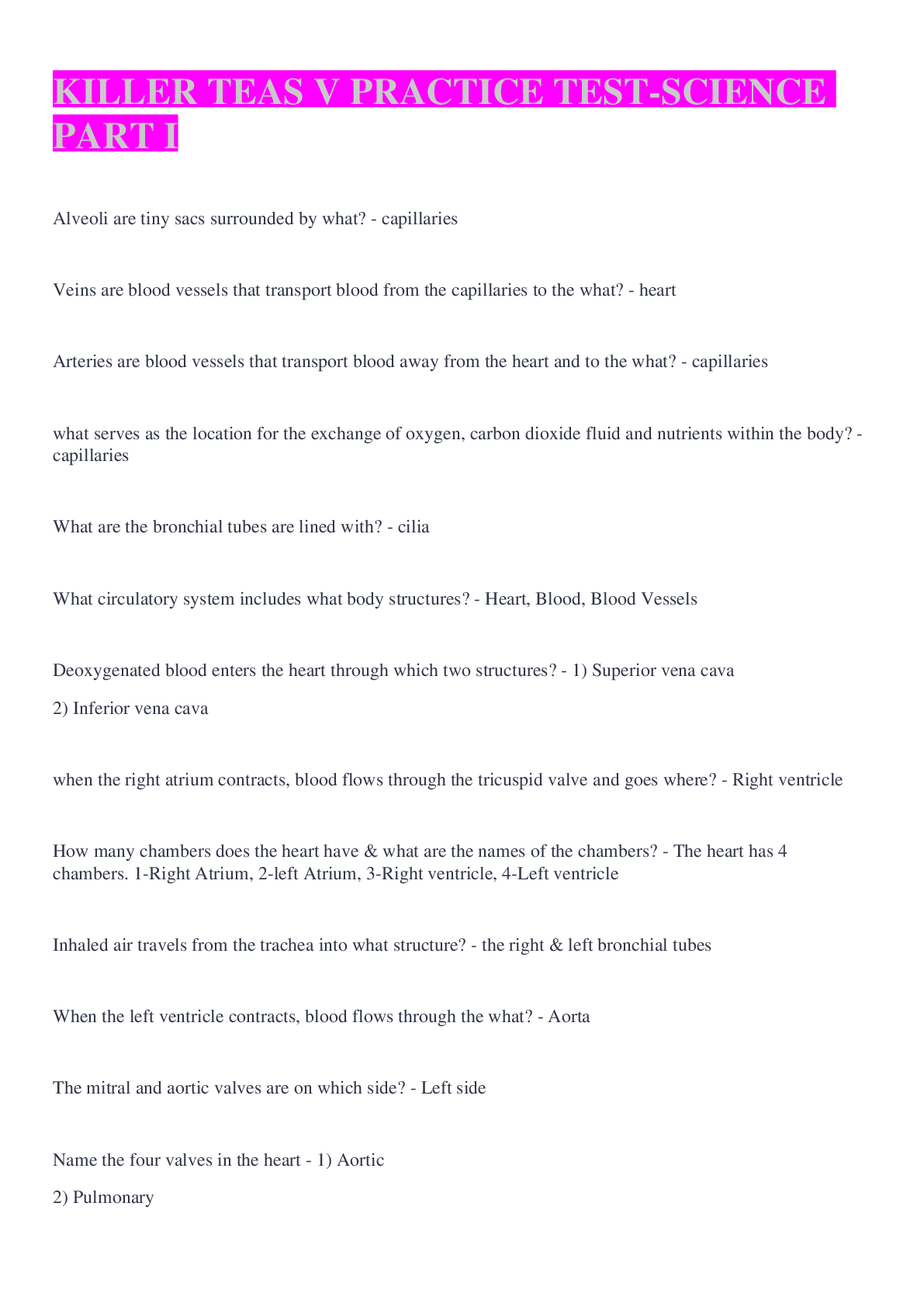Health Care > EXAM > NR 602 MIDTERM PEDIATRIC QUESTIONS AND ANSWERS| GRADED A (All)
NR 602 MIDTERM PEDIATRIC QUESTIONS AND ANSWERS| GRADED A
Document Content and Description Below
Growth and development – There are a lot of potential questions covering from birth to age 17 1. Chalazions: chronic inflammatory lesion that develops from meibomian tear gland obstruction. Causes... : sebaceous cell, basal cell, or Meibomian gland cancer. Signs and symptoms: eyelid swelling and erythema evolving into painless, rubbery nodule at at eyelid margin. Treatment: warm moist compress. Resolves without treatment in several weeks. Not an infection. Referral to ophthalmology if does not resolve or if visual fields affected. 2. Blepharitis: Inflammation of the eyelid margin. Can be acute or chronic. Causes: Inflammation at the base of the eyelash by staph aureus, which alters meibomian eye secretion. Contact dermatitis, eczema, psoriasis, contact lens, or smoke exposure. Signs and symptoms: Redness, itching, irritation, gritty feeling, pink eyes, tearing, crusting or matting of eyelashes in the morning, scaling of eyelids, blurred vision that can be blinked away, and light sensitivity. Treatment: Nonpharmacological consists of warm moist compresses 1 to 2 X D fallowed by lid washing with baby shampoo. Artificial tears. Mild to moderate: Pharmacological includes erythromycin ointment (Ilotycin) 7-10 day. Bacitracin HS for 1-2 weeks. Azithromycin (Azasite) 1gtt bid X2d then qd for 5 days. Moderate to severe: Doxycycline 100mg bid for 2 to 4 weeks or Azithromycin 500mg qd X 3d Referral: severe eye redness and pain, light sensitivity, impaired vision, or poor response to treatment. 3. Otitis media: Inflammation or infection (bacterial or viral) of the middle ear with purulent effusion. Causes: strep pneumoniae, Hemophilus influenzae, Moraxella catarrhalis for bacterial. For viral adenovirus, RSV, or influenza. Environmental exposure to sick children (i.e, daycare). Pasive exposure to smoke or sleeping with a bottle. Signs and symptoms: Mild: Mild otalgia and fever < 102 F in the past 24 hours. Preverbal child may pull at ear or hair near ear to signify pain. Severe: moderate to severe otalgia or fever > 102 in the past 24 hours. May cry unconsolably or have otorrhea if TM perforated. TM abnormal in color (red or hemorrhagic) with moderate to severe bulging, impaired mobility, and possible perforation. Fever, sinus congestion, rhinorrhea, hearing loss or decreased. Diagnostic testing: pneumatic otoscopy for mobility. NR 602 MIDTERM PEDIATRIC QUESTIONS AND ANSWERS| GRADED A [Show More]
Last updated: 1 year ago
Preview 1 out of 36 pages
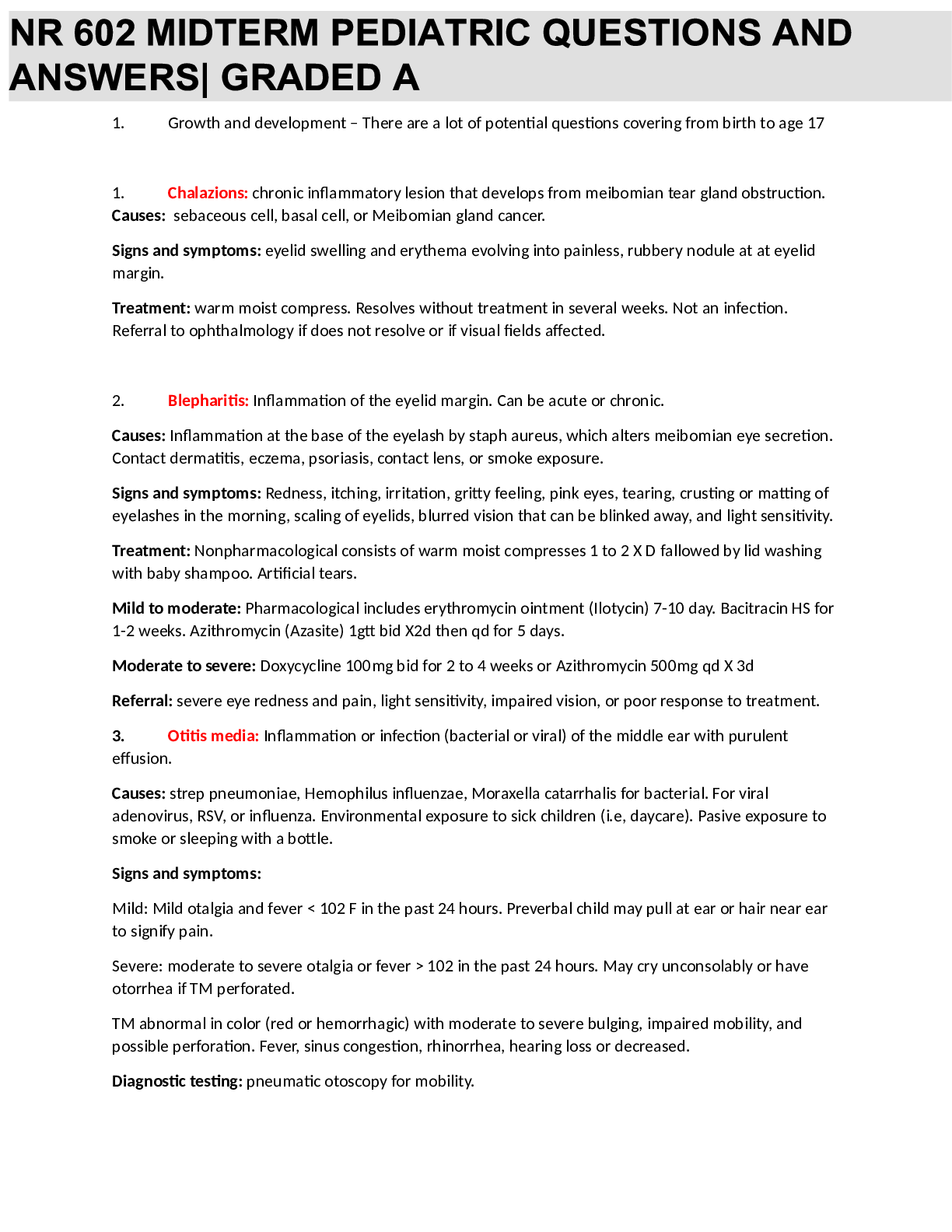
Reviews( 0 )
Document information
Connected school, study & course
About the document
Uploaded On
Sep 17, 2022
Number of pages
36
Written in
Additional information
This document has been written for:
Uploaded
Sep 17, 2022
Downloads
0
Views
19


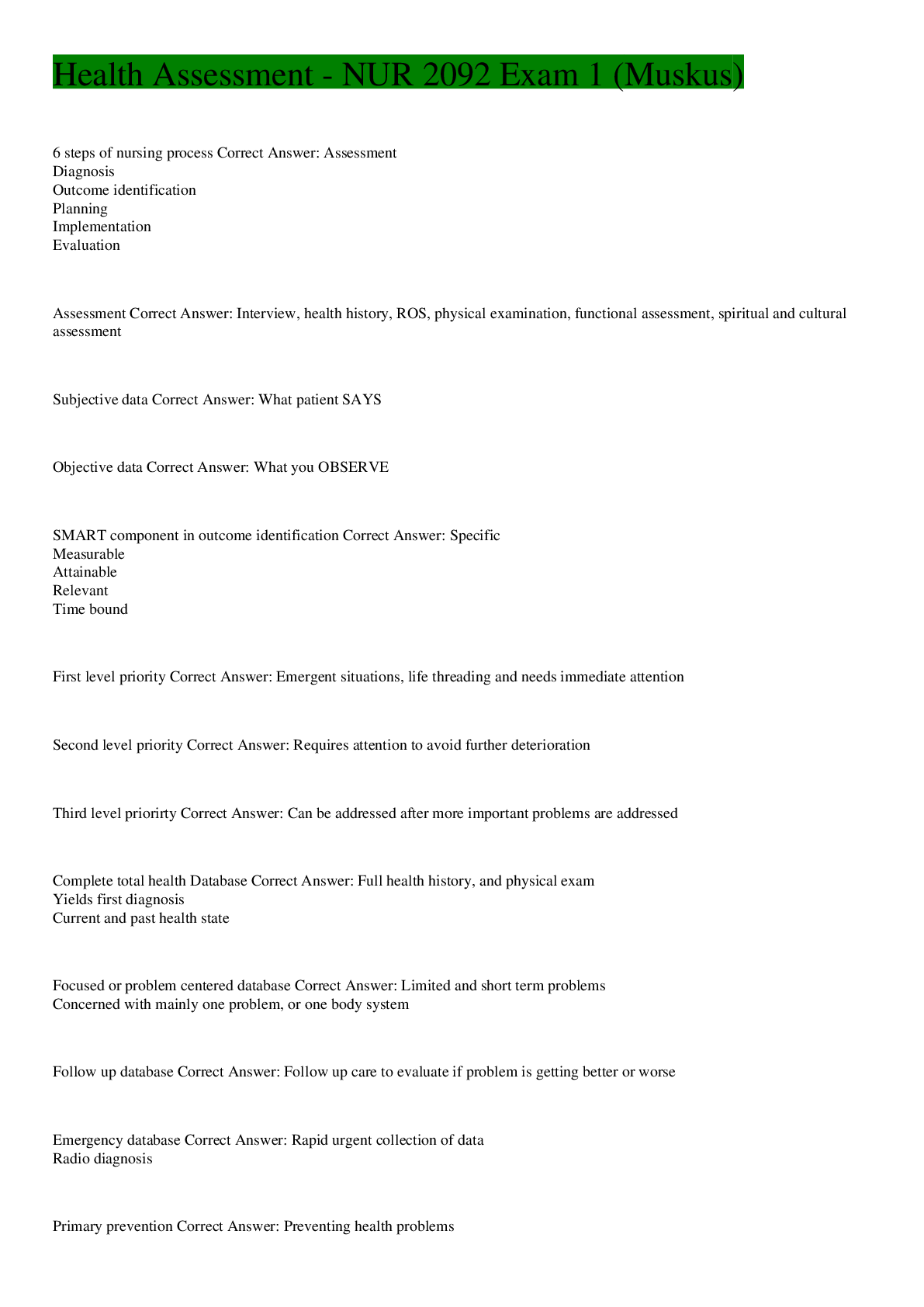
.png)
